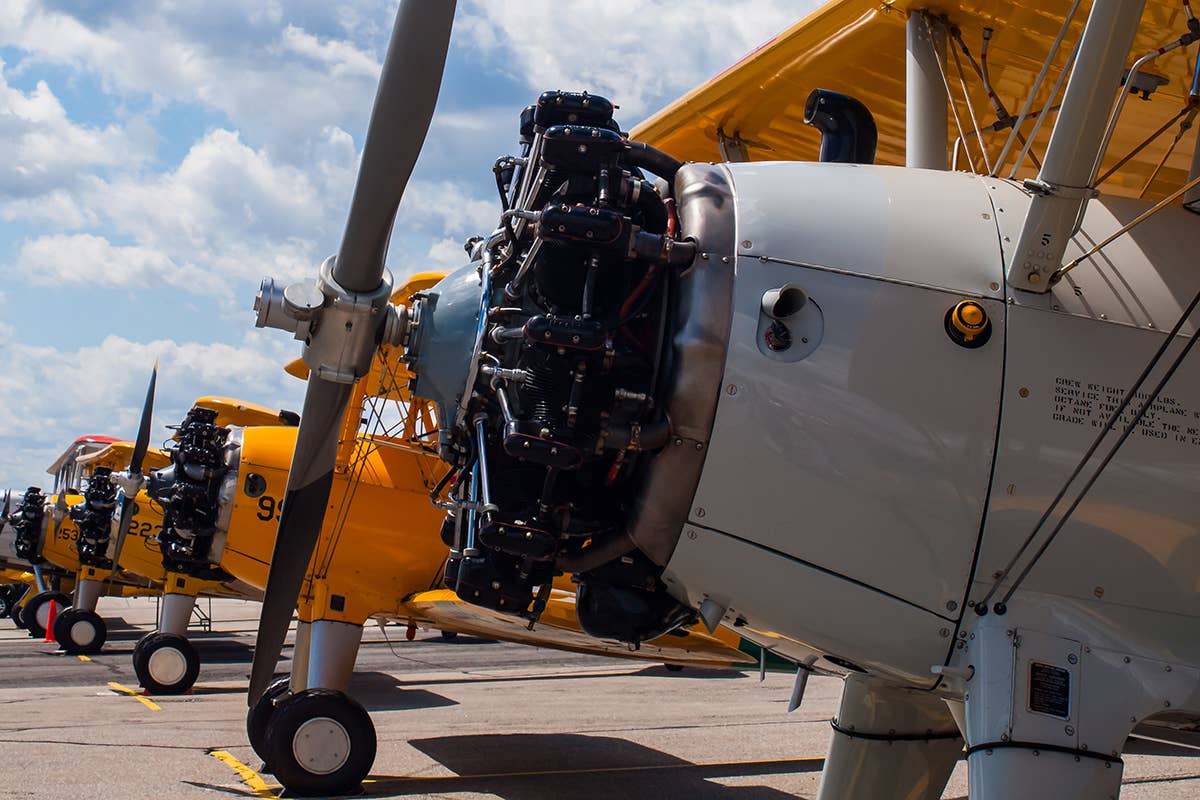Why Would Fire Extinguishers Be Required for Engine Starts?
Big piston radial engines from the 1940s, ‘50s—and through today—require careful attention during startup.

When radial engines fell out of use with changes in technology, the external fire extinguisher and the person operating it also fell out of use. [Shutterstock]
Q: When I was a passenger in the 1940s and early 1950s, there would be a guy standing near each engine when starting up, holding what seemed to be the nozzle of a good-sized fire extinguisher on wheels. I've always wondered if it was really needed and when and why was this ultimately deemed unnecessary?
A: In the 1940s and 1950s, piston radial engines were the norm on aircraft—for both general aviation and commercial operations. Because of the design, oil has a tendency to pool in the lower cylinders of these engines. Usually, this creates a puff of blue smoke during engine start—but if there is too much oil, there is a chance of fire.
That was just part of the challenge. Starting a radial powerplant requires the engine to be primed, and that takes some skill.
Too little prime, and the engine would struggle and not start.
Too much prime, and the engine would flood—and in the worst-case scenario, there would be a loud backfire followed by an induction fire from over-priming. Overpriming during engine start is a risk on a hot start—that is, when the engine is warm because the aircraft is doing multiple flights per day.
The fire extinguishers were mounted on wheels to make them easier to transport because they were too large and heavy for one person to carry.
When radial engines fell out of use with changes in technology, the external fire extinguisher and the person operating it also fell out of use.
Starting a radial engine after it’s been dormant for some time can be an extra challenge. There is a tendency to overprime, and sometimes there are surprises.
Expectations and a Surprise
I’ve been that person with the fire extinguisher standing by, during the startup of a 1940s-era twin-engine aircraft that was undergoing restoration. The engines had not turned in more than a decade, and four of us stood nearby with fire extinguishers, just in case.
We didn’t experience a fire (thankfully), although we were interrupted by an appearance from an unauthorized visitor. As the right engine cranked, there was an explosion (expected), and a puff of bluish-white smoke, which was also expected. Suddenly, a field mouse shot out of the exhaust stack (not expected). It landed at my feet, and I’m not sure which one of us was more surprised.
The mouse was still alive and did not appear to be physically injured, but it did appear utterly confused and frankly, rather insulted at the sudden eviction from its home. The mouse took off running and did not trouble us again.
Do you have a question about aviation that’s been bugging you? Ask us anything you’ve ever wanted to know about aviation. Our experts in general aviation, training, aircraft, avionics, and more may attempt to answer your question in a future article.

Sign-up for newsletters & special offers!
Get the latest FLYING stories & special offers delivered directly to your inbox






